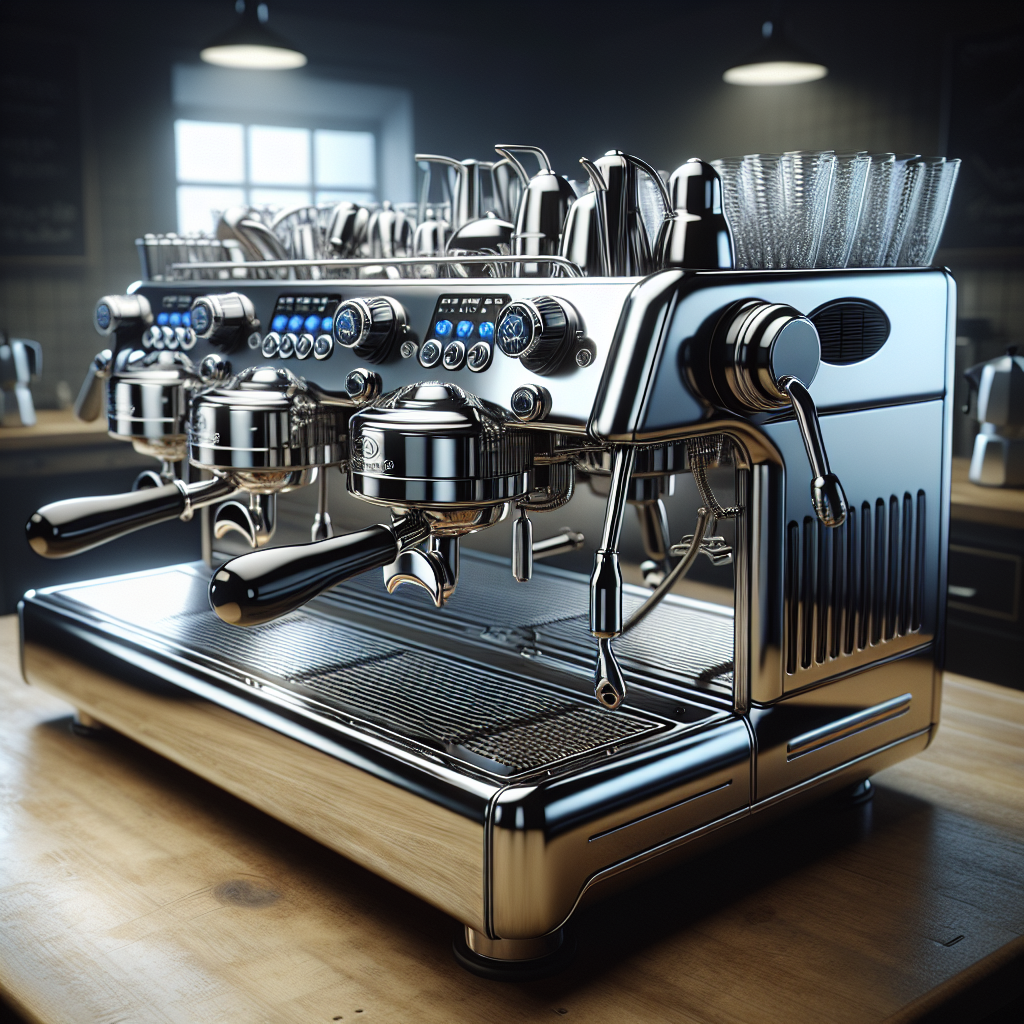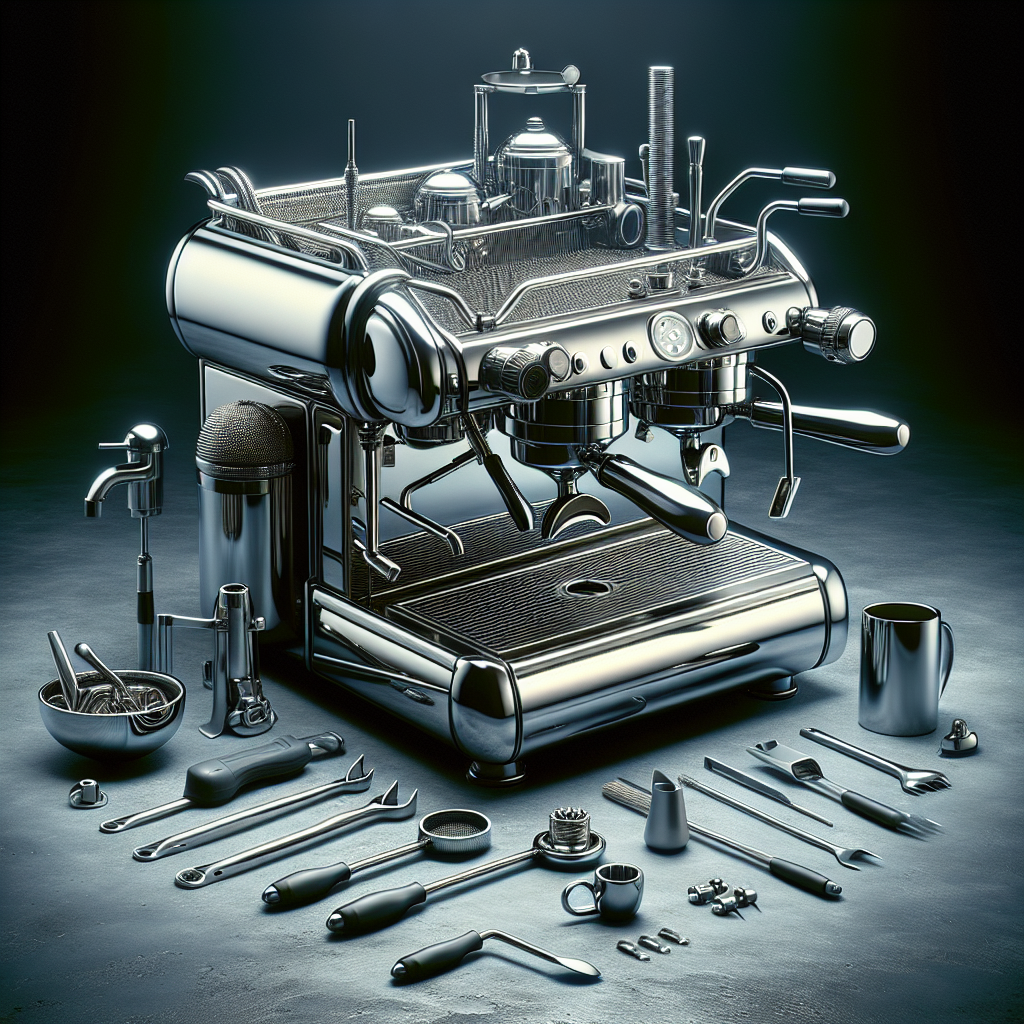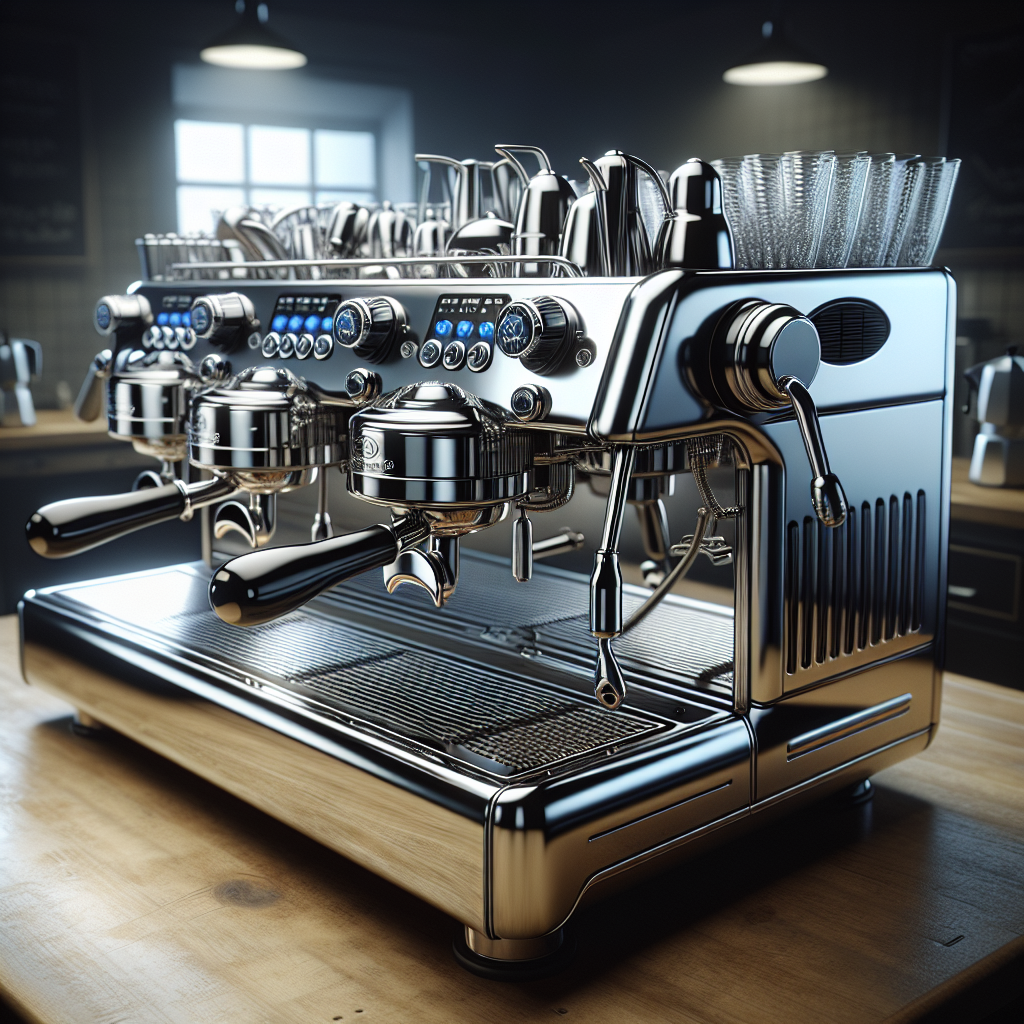
So, you’ve finally invested in a shiny stainless steel espresso machine, and now you’re wondering how to keep it in top-notch condition. Well, fret not, because we have the perfect solution for you. In this article, we’ll explore the best way to descale your stainless steel espresso machine, ensuring that it stays clean and free from any mineral buildup. So, without further ado, let’s dive into the world of descaling and discover the secrets to maintaining a pristine espresso machine that delivers the perfect cup of joe every time.
Understanding Scale Build-up in Espresso Machines
Scale build-up in espresso machines refers to the accumulation of mineral deposits, primarily calcium and magnesium, on various internal components of the machine. These minerals are present in tap water and can form a hard, chalky substance over time. This build-up can impact the performance and longevity of your espresso machine, making regular descaling an essential maintenance task.
What causes scale build-up in espresso machines?
Scale build-up occurs due to the minerals present in water. When water is heated, the minerals dissolve and can adhere to the internal parts of the espresso machine. Over time, this accumulation can restrict the flow of water, affect the temperature control, and even cause the machine to malfunction. Therefore, if you live in an area with hard water, you are more likely to experience scale build-up in your espresso machine.
Why is it important to descale a stainless steel espresso machine?
Descaling a stainless steel espresso machine is crucial because it helps remove the scale build-up and ensures the machine operates at its optimal performance. If left unaddressed, the scale can affect the taste and quality of your espresso, as well as the overall functionality of the machine. Regular descaling can also help extend the lifespan of your espresso machine and prevent clogs and damage to its internal components.

How often should you descale a stainless steel espresso machine?
The frequency of descaling depends on various factors such as the hardness of your water, the frequency of use, and the specific recommendations from the espresso machine manufacturer. As a general guideline, it is recommended to descale your stainless steel espresso machine every one to three months. However, if you notice a decrease in performance or taste, it may be necessary to descale more frequently. It is essential to refer to the manufacturer’s instructions for your specific machine to determine the recommended descaling frequency.
Choosing the Right Descaling Solution
When selecting a descaling solution for your stainless steel espresso machine, it is important to choose one that is specifically designed for espresso machines and safe to use on stainless steel surfaces. There are various types of descaling solutions available, including citric acid-based, vinegar-based, and commercially available descaling tablets. Consider the following factors when making your selection:
Types of descaling solutions for stainless steel espresso machines
Citric acid-based descaling solutions are popular choices due to their effectiveness in removing scale build-up. These solutions are safe to use on stainless steel and other espresso machine components. Vinegar can also be used as a natural descaling agent, but it may leave a lingering odor. Commercially available descaling tablets offer convenience and ease of use, but it is important to ensure they are suitable for stainless steel espresso machines.
Factors to consider when selecting a descaling solution
It is essential to consider the compatibility of the descaling solution with stainless steel surfaces. Some solutions may cause discoloration or damage to the stainless steel, so it is crucial to choose a product that is safe for your espresso machine. Additionally, consider the ease of use, effectiveness in removing scale build-up, and any specific recommendations from the espresso machine manufacturer.
Preparing the Espresso Machine for Descaling
Proper preparation of your espresso machine before descaling ensures the process is thorough and effective. Follow these steps to prepare your machine:
Emptying and cleaning the water reservoir
Start by emptying the water reservoir of your espresso machine. Discard any remaining water, and remove any filters or water softening cartridges if applicable. Clean the reservoir with warm soapy water to remove any residue or impurities.
Removing and cleaning the portafilter and filter basket
Next, remove the portafilter and filter basket from the espresso machine. These components can also accumulate scale build-up, so it is important to clean them thoroughly. Rinse them with warm water and use a small brush to remove any residual coffee grounds or scale. Wipe them dry before reattaching them to the machine.
Cleaning the steam wand
If your espresso machine has a steam wand, it is essential to clean it as well. Wipe the steam wand with a damp cloth to remove any milk residue or build-up. If there is stubborn scale, use a brush soaked in a descaling solution to gently scrub the wand. Repeat until the wand is clean and free from any scale or residue.
Preventing clogs in the machine during descaling
To prevent clogs in your machine during the descaling process, remove any removable parts such as screens or gaskets and clean them separately. Additionally, ensure that the brew head or group head is clear of any coffee grounds or build-up.

Step-by-Step Guide to Descaling a Stainless Steel Espresso Machine
Now that you have prepared your espresso machine, follow these step-by-step instructions to descale it effectively:
Diluting the descaling solution according to manufacturer instructions
Read the manufacturer’s instructions on the descaling solution packaging to determine the proper dilution ratio. In most cases, it is advised to mix the descaling solution with water in a specific proportion. Follow these instructions carefully to achieve the correct dilution.
Running the descaling solution through the machine
Fill the water reservoir of your espresso machine with the diluted descaling solution. Turn on the machine and run it through a brew cycle, allowing the solution to pass through the internal components. This will help dissolve and loosen the scale build-up.
Allowing the solution to sit and dissolve scale build-up
After running the descaling solution through the machine, turn off the machine and let the solution sit in the machine for the recommended amount of time. This allows the solution to effectively dissolve any remaining scale build-up.
Rinsing the machine thoroughly
Once the solution has sat for the required time, empty the water reservoir and thoroughly rinse it with clean water. Fill the reservoir with clean water and run multiple brew cycles to flush out any remaining descaling solution and loosened scale. It is important to repeat this rinsing process until the water runs clear and there is no trace of the descaling solution.
Descale Maintenance Tips
Regular descale maintenance is crucial to keep your stainless steel espresso machine in optimal condition. The following tips can help keep scale build-up at bay:
Regular cleaning of the espresso machine
In addition to descaling, it is important to regularly clean your espresso machine. This includes wiping the exterior surfaces, cleaning the portafilter and filter basket, and ensuring the steam wand is free from any residue. By maintaining a clean machine, you reduce the chances of scale build-up and enhance the overall performance and longevity of your espresso machine.
Using filtered or distilled water to reduce scale build-up
Using filtered or distilled water can significantly minimize the accumulation of minerals in your espresso machine. Filtration systems or water softeners can remove impurities and reduce water hardness, effectively reducing the chances of scale build-up. Avoid using tap water directly in your espresso machine if it is known to have high mineral content.
Monitoring water hardness levels
Regularly testing the water hardness level can help you determine when descaling is needed. Test kits or meters are available to measure water hardness, which is typically expressed in parts per million (ppm) or degrees of hardness (dH). By monitoring the water hardness, you can adjust your descaling frequency accordingly.
Common Mistakes to Avoid
To ensure a successful descaling process, be mindful of these common mistakes:
Using the wrong descaling solution for stainless steel
Not all descaling solutions are suitable for stainless steel espresso machines. Using the wrong solution can cause damage or discoloration to the stainless steel surfaces. Always verify that the descaling solution is compatible with stainless steel and follow the manufacturer’s recommendations.
Not following manufacturer instructions for descaling
Each espresso machine may have specific descaling instructions provided by the manufacturer. It is crucial to follow these instructions carefully, as they are tailored to your specific machine model. Failure to adhere to the instructions may result in an incomplete descaling process or potential damage to the machine.
Neglecting to rinse the machine thoroughly after descaling
Rinsing your espresso machine thoroughly after descaling is essential to remove any residual descaling solution and loosened scale. Neglecting this step can lead to an undesirable taste in your espresso and may affect the functionality of the machine. Take the time to rinse the machine thoroughly until the water runs clear.
Alternative Methods for Descaling
In addition to commercially available descaling solutions, there are alternative methods you can try:
Using citric acid for descaling
Citric acid, a natural substance found in citrus fruits, can be used as an effective descaling agent. Dissolve citric acid powder in water according to the recommended ratio. Follow the same steps outlined in the step-by-step guide to descale your machine using the citric acid solution.
Vinegar as a natural descaling agent
Vinegar is another popular natural descaling agent. Mix equal parts of water and white vinegar, and use this solution to run through your espresso machine following the same descaling process. However, be aware that vinegar can leave a lingering odor, so it is important to thoroughly rinse the machine after descaling.
Commercial descaling tablets
Many espresso machine manufacturers offer their own descaling tablets specifically designed for their machines. These tablets are convenient to use and often come with detailed instructions. It is crucial to ensure that the tablets you choose are compatible with stainless steel espresso machines and follow the manufacturer’s guidelines.
Professional Descale Service
While descaling can be done at home, there may be instances when professional descale services are necessary. Consider the following situations where professional help may be warranted:
Considering professional descale services
If you are unsure about descaling your espresso machine yourself, or if you prefer to have a professional handle the task, you can opt for professional descale services. These services specialize in maintaining espresso machines and have the expertise and specialized equipment to descale your machine effectively.
When to seek professional help
If you have attempted to descale your espresso machine but are still experiencing issues such as clogs, inconsistent performance, or off-flavors in your espresso, it may be time to seek professional help. Professional technicians can assess the condition of your machine and perform a thorough descaling process to address any underlying issues.
Benefits of Regular Descaling
Regular descaling offers several benefits for your stainless steel espresso machine:
Improved taste and quality of espresso
Descaling removes the build-up of mineral deposits, which can negatively impact the taste and quality of your espresso. By descaling regularly, you can ensure that your coffee always tastes fresh, with no lingering off-flavors or bitterness.
Extended lifespan of the espresso machine
Scale build-up can impede the functionality of your machine over time and potentially lead to costly repairs or premature machine failure. By descaling regularly, you can extend the lifespan of your espresso machine, saving you money in the long run and preserving your investment.
Prevention of clogs and damage to internal components
Cleaning the internal components of your espresso machine by descaling helps prevent clogs and damage caused by scale build-up. By maintaining a clean and scale-free machine, you can ensure its proper function and minimize the risk of costly repairs or replacements.
Conclusion
Understanding the causes and consequences of scale build-up in stainless steel espresso machines is essential for any coffee enthusiast. Regular descaling, using the right descaling solution, and proper maintenance can help ensure that your machine consistently delivers delicious espresso, extends its lifespan, and prevents any potential issues. By following the comprehensive guide provided, you can confidently descale your stainless steel espresso machine and enjoy the perfect cup of coffee every time.